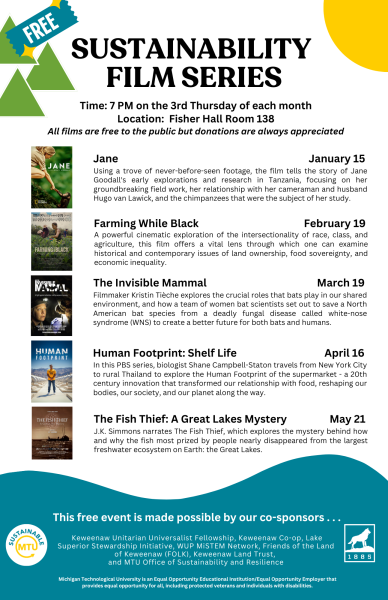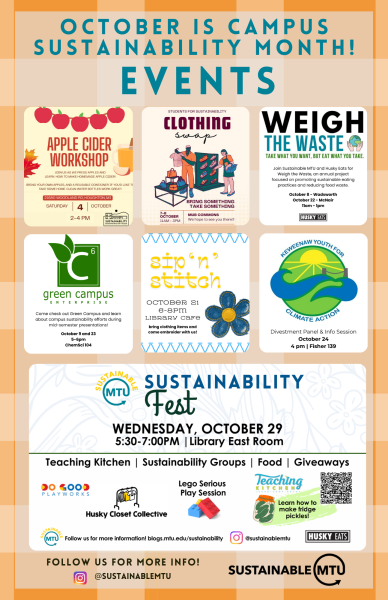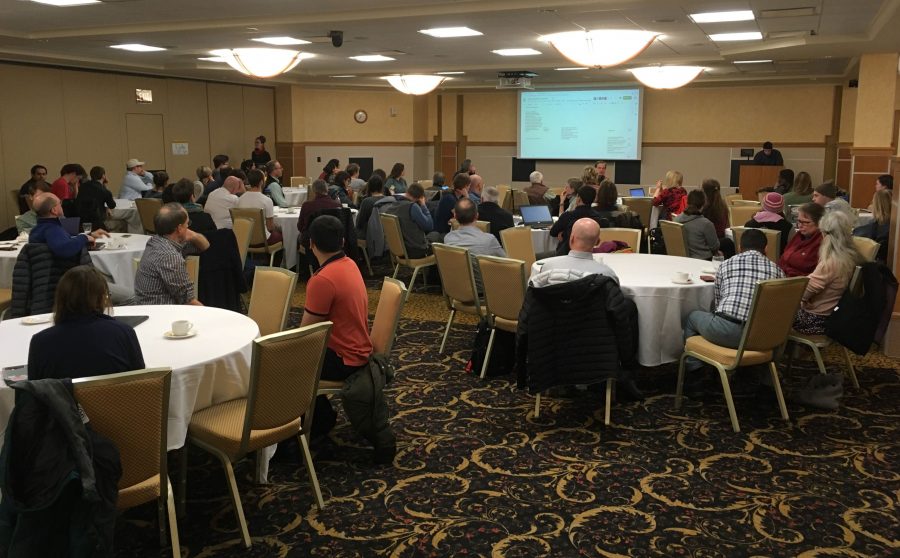The Sustainability Film Series returns to Michigan Tech on Thursday, January 15. Now in its 16th year, the series continues the tradition of bringing timely, informative, and thought-provoking films to campus. The series fosters meaningful dialogue and reflection among Michigan Tech faculty, students, and staff, as well as members of the broader Keweenaw community.
Films will be screened at 7 p.m. on the third Thursday of each month from January through May in Fisher Hall Room 138 on Michigan Tech’s main campus. Each screening is followed by a facilitated discussion, with refreshments provided.
The series is open to the public, and all films are free to attend. A suggested $5 donation is greatly appreciated to help support the continuation of the series. If you make a donation online, please designate gifts to the “Sustainability Film Series”.
| 2026 Sustainability Film Series |
|
Jane January 15 Using a trove of never-before-seen footage, the film tells the story of Jane Goodall’s early explorations and research in Tanzania, focusing on her groundbreaking field work, her relationship with her cameraman and husband Hugo van Lawick, and the chimpanzees that were the subject of her study. Add Jane to your Google calendar. |
|
Farming While Black February 19 A powerful cinematic exploration of the intersectionality of race, class, and agriculture, this film offers a vital lens through which one can examine historical and contemporary issues of land ownership, food sovereignty, and economic inequality. Add Farming While Black to your Google calendar. |
|
The Invisible Mammal March 19 Filmmaker Kristin Tièche explores the crucial roles that bats play in our shared environment, and how a team of women bat scientists set out to save a North American bat species from a deadly fungal disease called white-nose syndrome (WNS) to create a better future for both bats and humans. Add The Invisible Mammal to your Google calendar. |
|
Human Footprint: Shelf Life April 16 In this PBS series, biologist Shane Campbell-Staton travels from New York City to rural Thailand to explore the Human Footprint of the supermarket – a 20th century innovation that transformed our relationship with food, reshaping our bodies, our society, and our planet along the way. Add Human Footprint: Shelf Life to your Google calendar. |
|
The Fish Thief: A Great Lakes Mystery May 21 J.K. Simmons narrates The Fish Thief, which explores the mystery behind how and why the fish most prized by people nearly disappeared from the largest freshwater ecosystem on Earth: the Great Lakes. Add The Fish Thief: A Great Lakes Mystery to your Google calendar. |
We’d be grateful if you could help spread the word about the Sustainability Film Series within your network. Attached is a poster showcasing this year’s films, which we encourage you to display and share as you see fit.



